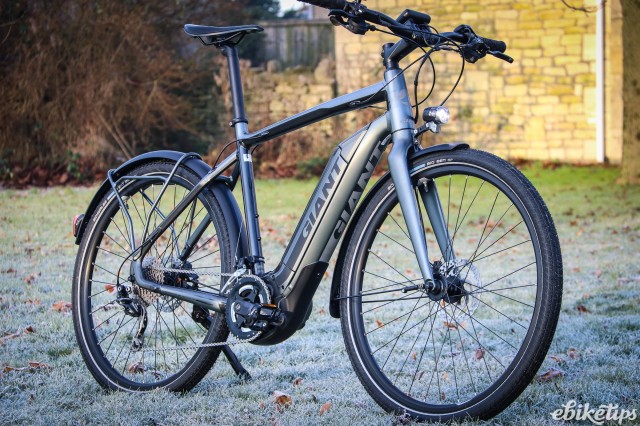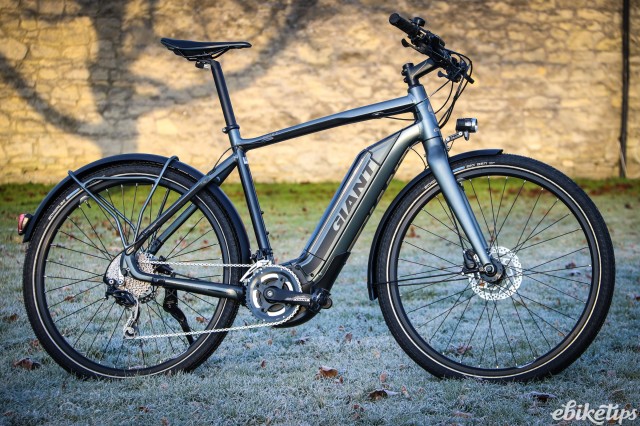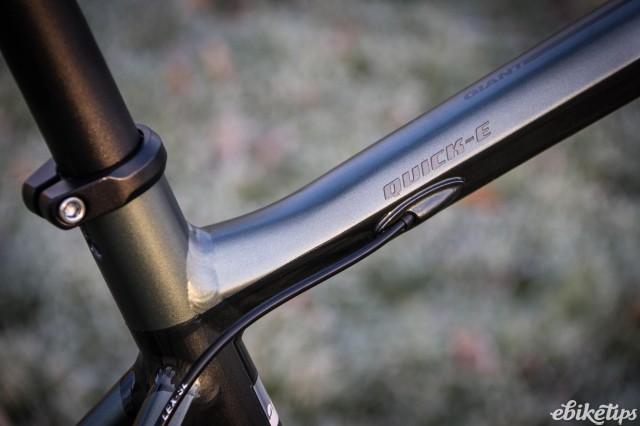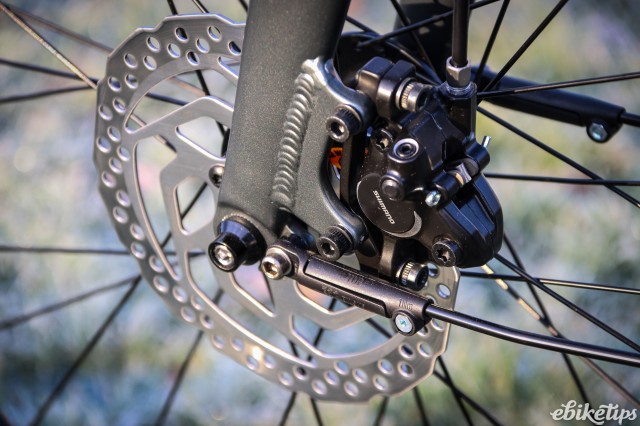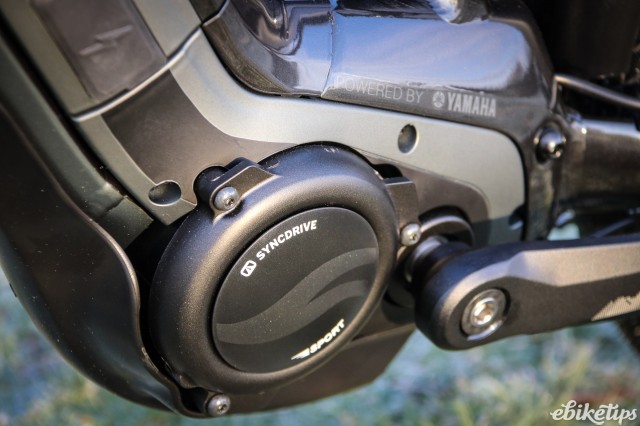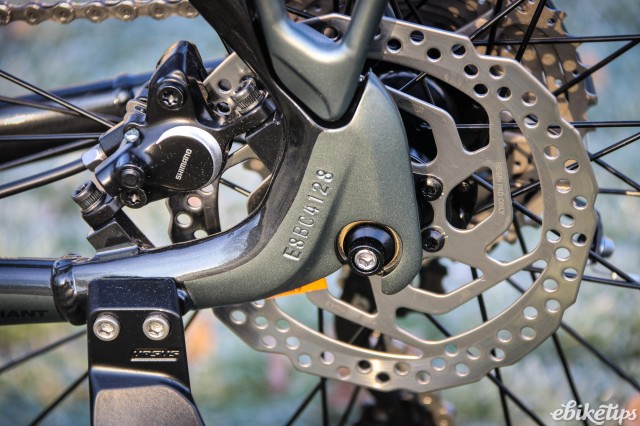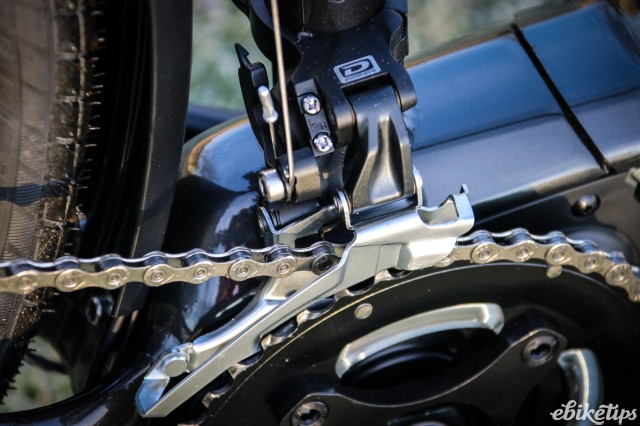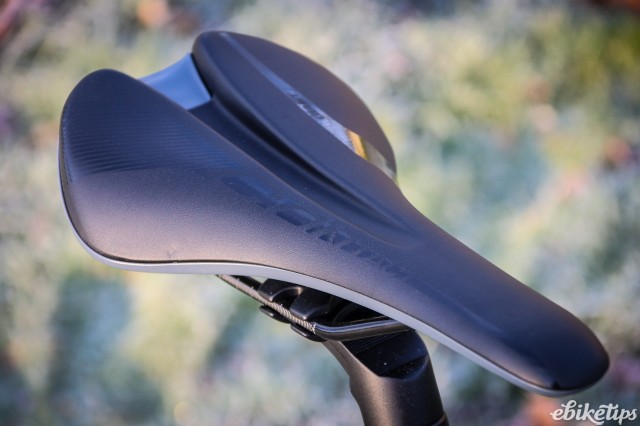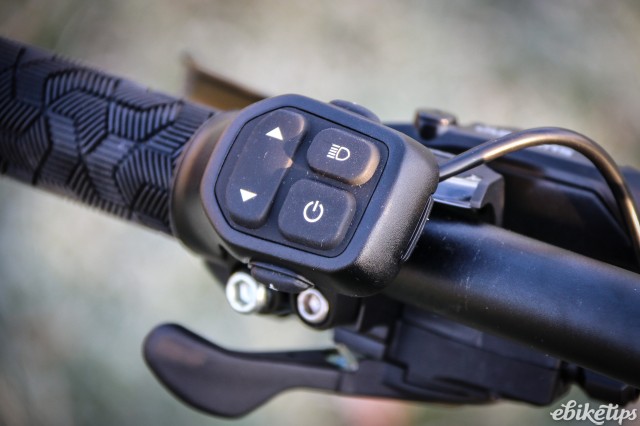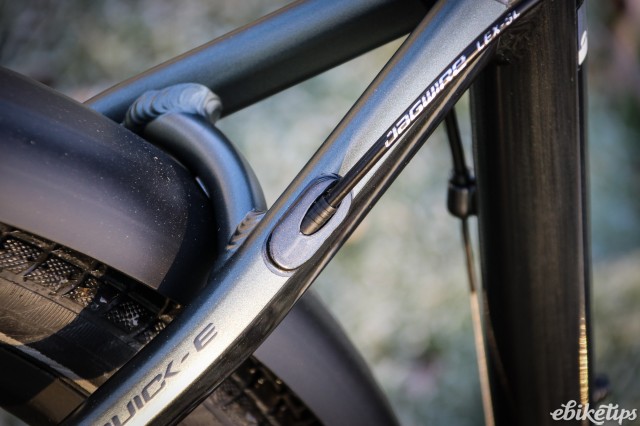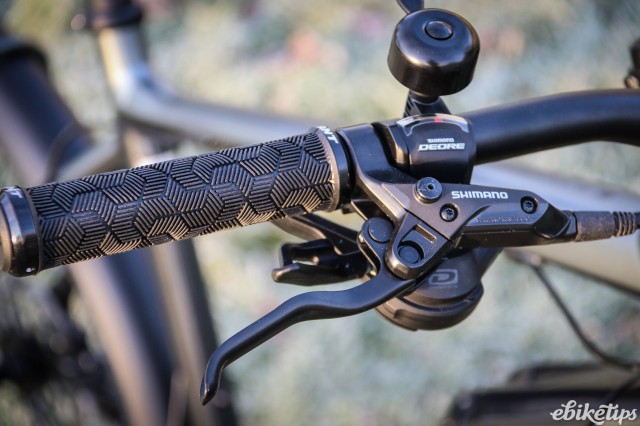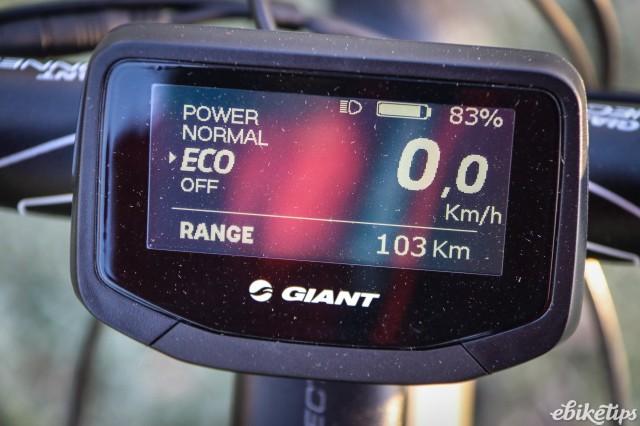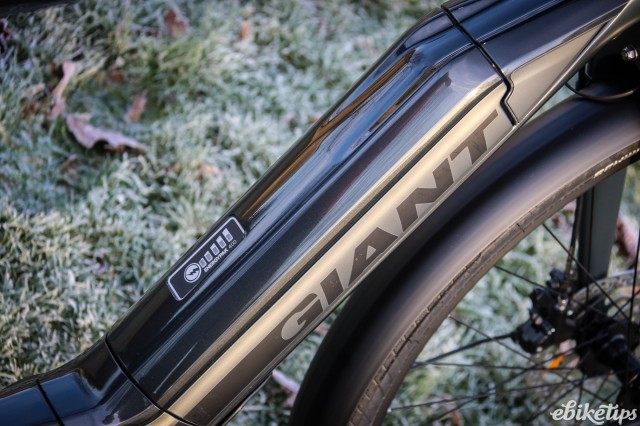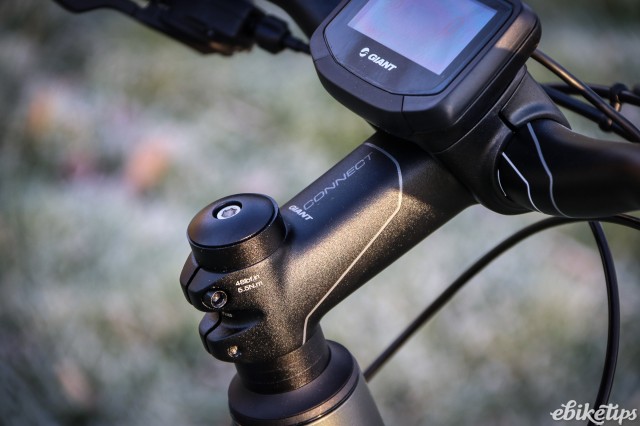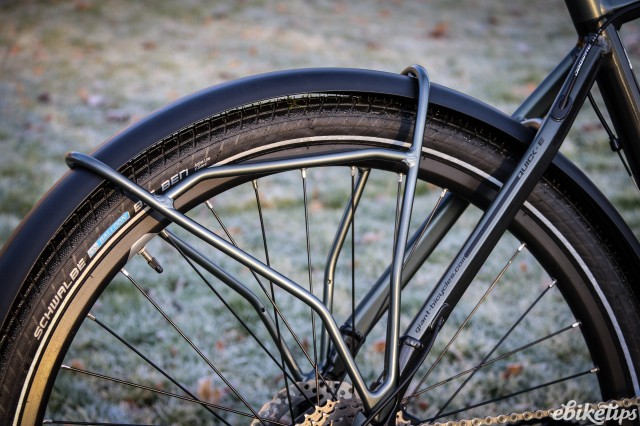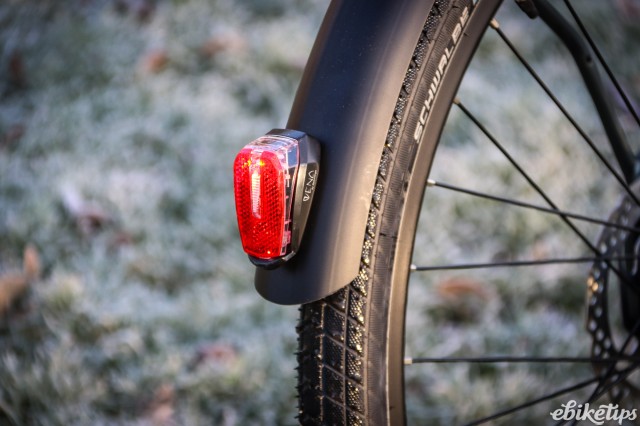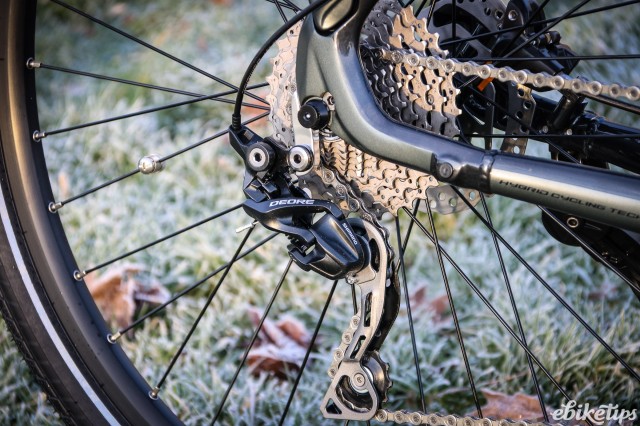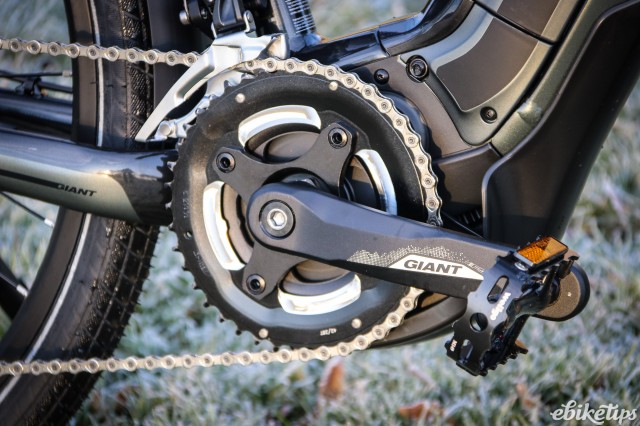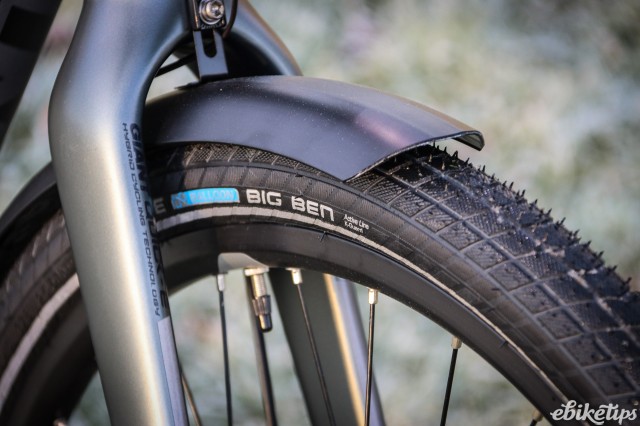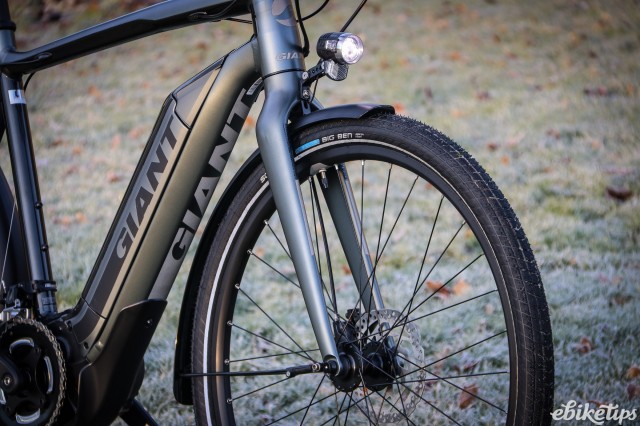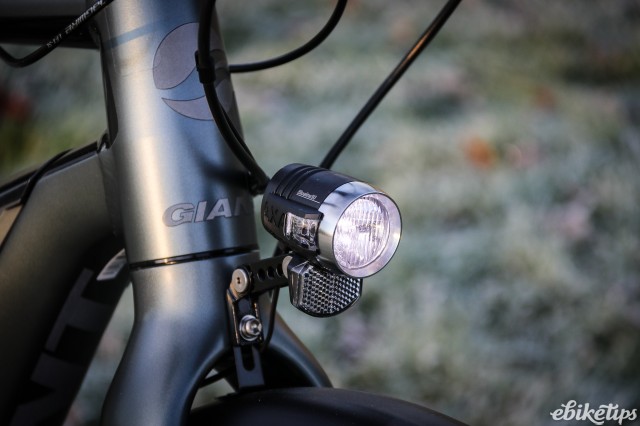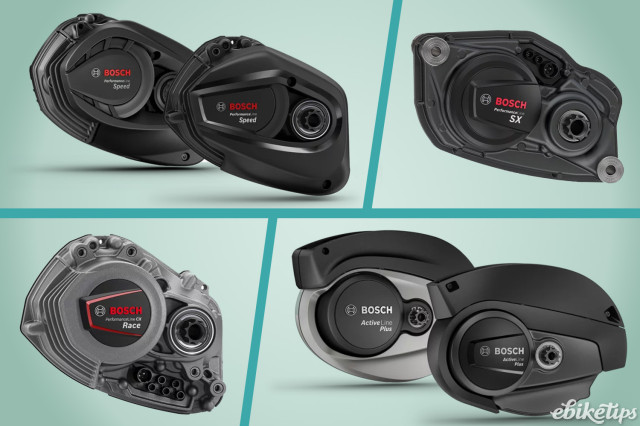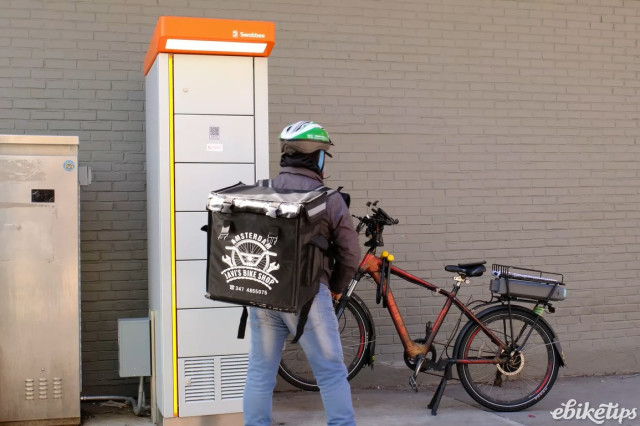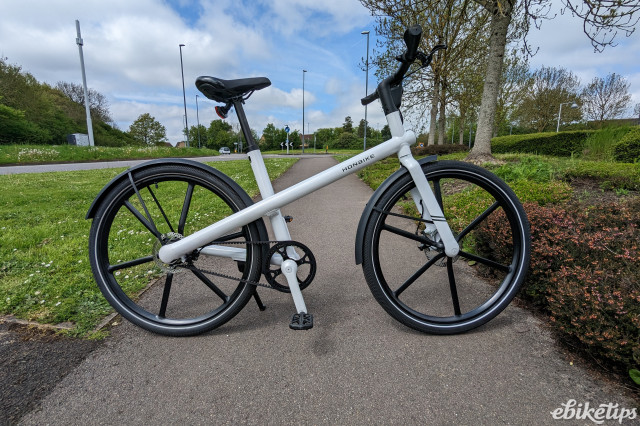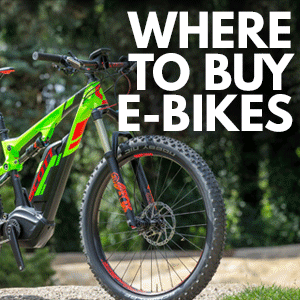Review: Giant Quick E+
Overview
- Great quality build and spec
- Good range
- Display and remote are easy to use
- Motor not quite suited to this type of bike
- Double chainring is unneccesary
The Quick E+ is the top bike in Giant's Urban range and it puts in a strong performance, like its stablemates the Ease E+ and the Prime E+. The Yamaha PW motor isn't the best fit for a bike that's really designed as a fast commuter, and the double chainset is a bit of an odd pick, but it's still a very well-rounded and nicely-finished bike.
The Quick E+ doesn't follow the stripped-down format of some fast commuters: this is a full-spec city bike with mudguards, a rack, kickstand and integrated lights. The rear mudguard and rack are integrated together, with the rack forming the stays of the mudguard. There's a rear light plumbed into the back of the mudguard too with the wiring running internally.
The Giant is unusual in that it has a double chainring. That's not an option on a Bosch bike as the Bosch motors use a smaller chainring that's not directly driven by the cranks. The Yamaha PW motor at the heart of Giant's Sync Drive system is direct drive, though, and the Quick E+ uses a 42/28T chainset with a 10-speed 11-36T cassette for a very wide gear range, probably the widest you're likely to see on any city bike. Shimano's Deore components make up most of the transmission: it's reliable mountain-bike-derived equipment and built to last. You get Shimano hydraulic discs to stop you.
Yamaha provide Giant with the motor but they've built a custom system around it, which they call SyncDrive. It uses four sensors to match your input with the motor output, which peaks at 80Nm, nominally more even than the Bosch Performance Line CX motor. The remote control is built into the handlebar grip which puts it in a very good position for easy control.
The battery is made by Samsung and at 400Wh it's a typical capacity for a good-quality city bike. Giant claim a range of up to 130km in Eco mode. Both the motor and the battery are well integrated into the frame, giving the Quick E+ a clean look.
The Quick E+ doesn't have a suspension fork, opting instead for an alloy frame and fork and high-quality Schwalbe Big Ben tyres to cope with the potholes. Overall it's designed for quicker commuting with a more aggressive position than most city bikes.
Dave says: The Quick E+ is a great-looking bike dripping with good quality kit. Everything about it, from the transmission to the finishing kit, is high quality and the battery and motor are nicely integrated giving the bike a clean look. It's fully specced for city riding too, which is unusual for a bike that's a bit more aggressive in terms of its position; often bikes like this come without a mudguard and lights but this is still the full package.
The position isn't that aggressive if you're used to road bikes and fast hybrids, but it's a lot more head down than most e-bikes. Really it feels like it's aimed at riders with some non-powered experience who are looking for an e-bike that feels similar to the bikes they already have. It works, too: it's a faster-feeling position without being over-stretched, and the position and the contact points are designed as if you're going to be taking it on some longer excursions. Certainly I felt more comfortable on this bike after 10 miles than I generally do aboard a more sit-up-and-beg bike with a wider saddle.
The SyncDrive motor is controlled by a very neat remote that's integrated into the bar grip. Switching between the three assistance modes is easy, as is changing the data display on the central LCD screen, and turning the lights on and off. There's a walk mode too.
The big central screen is nice and clear and gives you easily accessible information about your speed, the mode you're in and the state of the battery, which is more or less all you want most of the time. The battery status is shown as an icon and also as a percentage; It's nice to have battery information that's more detailed (the Bosch system of five bars feels a bit limited at times) but on the other hand it also needs to be as linear as possible. I found that the battery worked through the second half of its charge more quickly than the first; my daily chug up my reference hill (1.5km at 6% average) only needed about 15% of the battery in the Normal power setting when the battery was full, but when it was less than half full it took nearer 25% for the same climb using the same effort. It'd be great if Giant recalibrated the management system to take tat into account.
The Yamaha SyncDrive motor is powerful and reasonably quiet; it's not near-silent like the Brose motor but neither is it as noisy as a Bosch or Shimano city motor. Power application is more tied to torque than with Bosch or STEPS; you get more back if you put in more, and even in Power mode (the top setting) it's not a bike you can spin up a hill without any input. It's not that it's less powerful than a Bosch motor, more that it uses the power differently. If you're used to riding a non-powered bike then that directness of link between pedal input and power output will feel quite natural. If you're not that interested in doing any work yourself then there are times where you'll find yourself wishing the bike would do more without you trying.
Range-wise I was getting four runs up and down the hill to work before the anxiety kicked in. That's not that far – less than 40km – but it's similar to other 400Wh bikes I've tested. Some make it up five times. I'm generally in a high mode; if you were riding this bike around on the flat in mostly Eco mode you'd easily get 80km out of the Quick E+, and probably more. The range indicator on the Giant seems to basically be a multiplier of the battery charge, it doesn't really change its guess based on the terrain you're riding like the Bosch and Shimano systems do. I found that it was a bit less useful as a consequence, although you should always take those range numbers with a pinch of salt anyway.
The bike's double chainring is a bit of an odd choice. With a 42-tooth chainring and an 11-36 cassette you've got all the gears you need for anything once you add a motor into the mix. I only ever changed down to the inner chainring to make sure the shifter worked, and to see what the bike was like without power on a climb. Those low gears do come in handy there, and the Quick E+ doesn't feel especially sluggish without the motor assistance. The Yamaha motor is less draggy than the Bosch because it's direct drive, and the bike doesn't have any unnecessary suspension stealing your effort. If you were dragging 20 kilos of shopping back up a steep hill you might find yourself needing the granny ring, but for most people it's not going to get much use. You'd be better off dropping the chainring to a single 40T chainring and speccing a wider cassette if you wanted a wider gear spread.
Overall the Quick E+ is a good bike and the quality of the frame and components is very high: this is a bike that'll last, and it's easy and comfortable to ride. I'm not convinced the Yamaha PW motor is a very good fit for a fast commuter though: it's not as eager as something like a Bosch Performance Line unit, and it works better in the context of the more laid-back Prime E+ bike that we've previously tested. Giant are moving over to the newer, more racy PW-X motor for their mountain bikes and I expect the Prime E+ will eventually get that motor too: when it does it will probably be a more compelling package. If they could ditch a chainring too while they're messing about with the bike, that'd also be welcome. Aside from that, everything's in place for a great bike. As it is right now it's still good, but not quite the fast package it wants to be.
